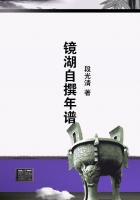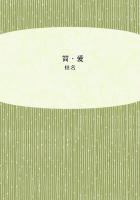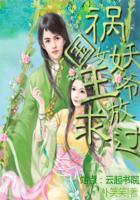But the lightning not only reveals strange treasures and gives water to the thirsty land and makes plain what is doing under cover of darkness; it also sometimes kills, benumbs, or paralyzes. Thus the head of the Gorgon Medusa turns into stone those who look upon it. Thus the ointment of the dervise, in the tale of Baba Abdallah, not only reveals all the treasures of the earth, but instantly thereafter blinds the unhappy man who tests its powers. And thus the hand of glory, which bursts open bars and bolts, benumbs also those who happen to be near it. Indeed, few of the favoured mortals who were allowed to visit the caverns opened by sesame or the luck-flower, escaped without disaster. The monkish tale of "The Clerk and the Image," in which the primeval mythical features are curiously distorted, well illustrates this point.
In the city of Rome there formerly stood an image with its right hand extended and on its forefinger the words "strike here." Many wise men puzzled in vain over the meaning of the inscription; but at last a certain priest observed that whenever the sun shone on the figure, the shadow of the finger was discernible on the ground at a little distance from the statue. Having marked the spot, he waited until midnight, and then began to dig. At last his spade struck upon something hard. It was a trap-door, below which a flight of marble steps descended into a spacious hall, where many men were sitting in solemn silence amid piles of gold and diamonds and long rows of enamelled vases. Beyond this he found another room, a gynaecium filled with beautiful women reclining on richly embroidered sofas; yet here, too, all was profound silence. Asuperb banqueting-hall next met his astonished gaze; then a silent kitchen; then granaries loaded with forage; then a stable crowded with motionless horses. The whole place was brilliantly lighted by a carbuncle which was suspended in one corner of the reception-room; and opposite stood an archer, with his bow and arrow raised, in the act of taking aim at the jewel. As the priest passed back through this hall, he saw a diamond-hilted knife lying on a marble table; and wishing to carry away something wherewith to accredit his story, he reached out his hand to take it; but no sooner had he touched it than all was dark. The archer had shot with his arrow, the bright jewel was shivered into a thousand pieces, the staircase had fled, and the priest found himself buried alive.[49]
[49] Compare Spenser's story of Sir Guyon, in the "Faery Queen," where, however, the knight fares better than this poor priest. Usually these lightning-caverns were like Ixion's treasure-house, into which none might look and live. This conception is the foundation of part of the story of Blue-Beard and of the Arabian tale of the third one-eyed CalenderUsually, however, though the lightning is wont to strike dead, with its basilisk glance, those who rashly enter its mysterious caverns, it is regarded rather as a benefactor than as a destroyer. The feelings with which the myth-making age contemplated the thunder-shower as it revived the earth paralyzed by a long drought, are shown in the myth of Oidipous. The Sphinx, whose name signifies "the one who binds," is the demon who sits on the cloud-rock and imprisons the rain, muttering, dark sayings which none but the all-knowing sun may understand. The flash of solar light which causes the monster to fling herself down from the cliff with a fearful roar, restores the land to prosperity. But besides this, the association of the thunder-storm with the approach of summer has produced many myths in which the lightning is symbolized as the life-renewing wand of the victorious sun-god. Hence the use of the divining-rod in the cure of disease; and hence the large family of schamir-myths in which the dead are restored to life by leaves or herbs. In Grimm's tale of the Three Snake Leaves," a prince is buried alive (like Sindbad) with his dead wife, and seeing a snake approaching her body, he cuts it in three pieces. Presently another snake, crawling from the corner, saw the other lying dead, and going, away soon returned with three green leaves in its mouth; then laying the parts of the body together so as to join, it put one leaf on each wound, and the dead snake was alive again. The prince, applying the leaves to his wife's body, restores her also to life."[50] In the Greek story, told by AElian and Apollodoros, Polyidos is shut up with the corpse of Glaukos, which he is ordered to restore to life. He kills a dragon which is approaching the body, but is presently astonished at seeing another dragon come with a blade of grass and place it upon its dead companion, which instantly rises from the ground. Polyidos takes the same blade of grass, and with it resuscitates Glaukos. The same incident occurs in the Hindu story of Panch Phul Ranee, and in Fouque's "Sir Elidoc,"which is founded on a Breton legend.
[50] Cox, Mythology of the Aryan Nations, Vol. 1. p. 161.















